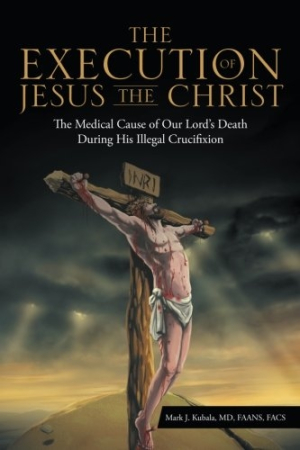The Execution of Jesus the Christ
The Medical Cause of Our Lord's Death during His Illegal Crucifixion
The Execution of Jesus the Christ uses medical knowledge to successfully bridge a gap between science and faith.
The Execution of Jesus the Christ by Mark J. Kubala reads a bit like a medical mystery, dealing with the question of just how a healthy man could have died so quickly on the cross.
Kubala is a neurosurgeon by trade and a Catholic by faith; together these two perspectives lead him down a road of inquiry, exploring the nature of Jesus’s death on the cross.
His book begins by placing Jesus’s death in the historical and geographical landscape of ancient Jerusalem. It then considers the power players of the day and the suffering that Jesus endured, before turning to the crucifixion itself. The final chapters give a medical interpretation of the available biblical evidence to explain why Jesus died so quickly.
The book suggests that Jesus died of a heart attack, which came as a result of the beatings, crown of thorns, and flogging he endured. The central argument is that Jesus had suffered such pain leading up to the crucifixion that in the last week of his life he was far from the model of a healthy thirty-three-year-old mason.
The book considers the events of Jesus’s final days and crucifixion not with an eye toward finding religious meaning, but with a practiced doctor’s eye. It considers factors like blood loss, the effects of eating or not eating, fluid intake, and the ramifications on the human body of the various beatings and sufferings described in the gospels.
The book takes it as a given that the events presented in the gospels took place more or less as described. This is a conservative view, but the book also exhibits a willingness to explore what might have actually happened beyond the gospels. This combination of doctrine with inquiry proves to be an effective approach. The biblical scholarship offered is good, and the background provided is a nice distillation of current research.
The book’s emphatic argument that Jesus’s death was illegal is unconvincing. There is a little too much emphasis placed on the role the Jewish people played in Jesus’s death, a choice that lets Roman authorities off of the hook, though the method of crucifixion was used primarily for enemies of the state. The book so skirts some of the nuances of the historical record.
Still, the book places the ultimate blame for Jesus’s death squarely in the substitutionary atonement camp, explaining it in terms of paying for the sins of the world and all people, which is standard Catholic teaching.
Writing is clear and easy to understand, taking complicated bits of history and medical explanations and transforming them into a coherent and cogent text. The book is well ordered, moving through the landscape of Jesus’s suffering and stopping to place each event or element into the context of a possible medical explanation. In this text, medicine and science work together to explain the realities behind faith.
The Execution of Jesus the Christ uses medical knowledge to successfully bridge a gap between science and faith.
Reviewed by
Jeremiah Rood
Disclosure: This article is not an endorsement, but a review. The publisher of this book provided free copies of the book and paid a small fee to have their book reviewed by a professional reviewer. Foreword Reviews and Clarion Reviews make no guarantee that the publisher will receive a positive review. Foreword Magazine, Inc. is disclosing this in accordance with the Federal Trade Commission’s 16 CFR, Part 255.

